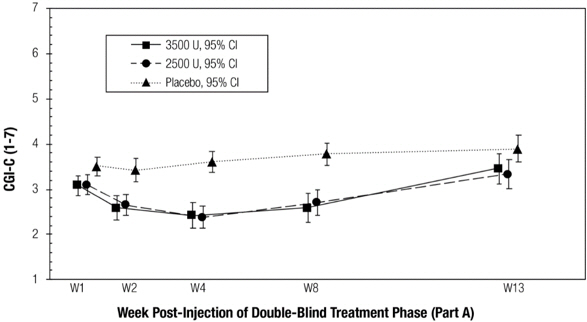A recently published study by neurologists at the Military Medical Center in San Antonio led by Dr. Grogan tried to find predictors of response to botulinum toxin injections in chronic migraine sufferers. They looked at the records of 128 patients who received injections of botulinum toxin, although they did not receive Botox (onabotulinumtoxinA), but a similar product, Myobloc (rimabotulinumtoxinB). It has been previously reported (and mentioned in this blog) that patients with headaches who experience constricting pain or pain in the eye are more likely to respond than those who have an “exploding” headache or pain with pressure felt going from inside out. This new study confirmed this observation, originally made by Dr. Rami Burstein and his colleagues at Harvard Medical School. Dr. Grogan and his colleagues’ patients received an average of 7 and a half treatments over a period of 22 months. Treatment results showed that 80% of their patients who received injections of Myobloc had at least a 50% improvement and 57% had a greater than 75% reduction in their headache frequency. This is similar to the 70% response rate we see with Botox injections. Patients who had migraine with aura were more likely to respond to Myobloc injections. Just like with Botox side effects were few and mild and only 4% of patients decided to stop this treatment due to side effects. More patients who received Myobloc (82%) complained of pain during injections. I have also observed this and the reason is that Myobloc is very acidic, while Botox is non-acidic.
There are two other botulinum toxin products on the market, but only Botox is approved by the FDA for the treatment of chronic migraine headaches. These other two products are Dysport (abobotulinumtoxinA) and Xeomin (incobotulinumtoxinA) and they are more similar to Botox than Myobloc because they are also type A botulinum toxins, while Myobloc is type B. Only Botox is approved by the FDA for the treatment of chronic migraine headaches, while the other three are approved for movement disorders such as dystonia as well as for cosmetic use.




